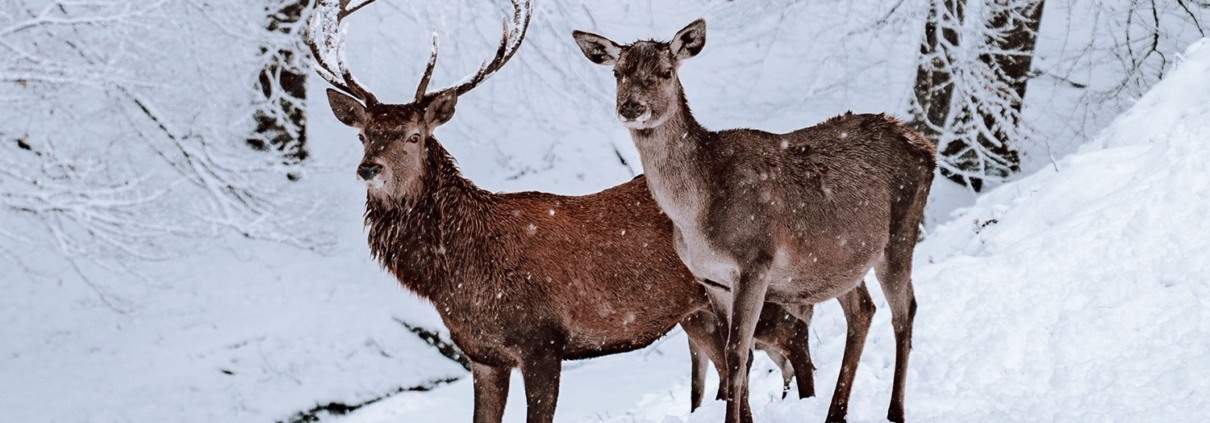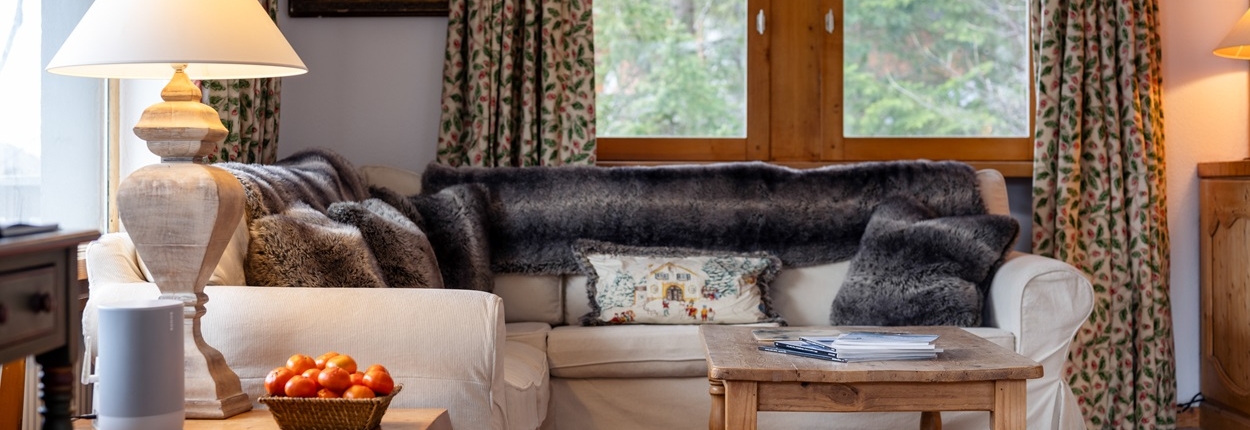Ski safari: how to spot alpine wildlife on your ski holiday
Nothing beats the magical, breath-taking thrill of spotting a wild animal in its natural environment.
Whether you’re out skiing or snowboarding around the Three Valleys, or talking a quiet walk or snowshoe adventure whilst staying in one of the ski resorts, here are the iconic alpine creatures you may be lucky enough to catch a glimpse of during your stay in the French Alps during the winter…
Alpine animals to spot in the Three Valleys, France
On the border of France’s very first National Park, the Parc National de la Vanoise, the mountains of the Three Valleys are home to all sorts of wild creatures. Alongside the alpine hares, bearded vulture (or lammergeier), foxes, badgers, martens, ermine and alpine choughs, these creatures can be spotted in and around the lift system and villages which make up the Three Valleys.
Wolves
We may not have brown bears here in the Alps, as they do in the Pyrenees, but we do have wolves! A controversial species which returned to France from zero in the 20th century, wolves have spread from northern Italy. 1003 animals were counted in France in 2023, with numbers increasing at around 15-20% annually. There have been numerous sightings at night in the valley between La Tania and Meribel, and in the forest around Courchevel.
In French: loup pronounced “looh”
Golden Eagles
The majestic bird of prey, whose wingspan is between 180-230cm, the iconic Golden Eagle is larger than most other Eagle species in Europe. To spot them, look out for a bird who lifts its wings up above the horizontal plane whilst soaring.
In French: aigle royal pronounced “ay-gluh roy-al”

Golden Eagle by Franceso Tommasini on Unsplash
Marmots
If you’ve been into a souvenir shop in the French Alps, you’ve likely encountered an Alpine Marmot, as these furry fellas are like our local mascots. Larger than you’d think, real marmots are up around 40-70cm from nose to tail, and hibernate during the winter months, but on a warm spring day you can spot them lounging around, soaking up the sun on a rock near their burrow.
In French: marmotte pronounced “marmotte” (roll your ‘r’!)

Marmotte Photo by Jametlene Reskp on Unsplash
Black Grouse
Otherwise known as a western capercaillie, handsome black grouse males feature black plumage with blue tints. The female is reddish brown. They are a sedentary species, in decline here in the Alps.
During winter, the birds make little igloo nests in the snow. Populations close to the ski runs are protected by cordoned-off zones, with signage. This is because if you ski close to their nests, they will take flight in fear, instead of staying warm in their nests.
In French: tetras lyre pronounced “tetra leer”

Tetras Lyre Photo by Daniil Komov on Unsplash
Chamois
Utterly adorable, these ‘goat-antelope’ have striped faces and are around 70-80cm tall, not very big. Extremely agile, they happily trot around the stony peaks in search of vegetation to nibble on. Their main predators are human hunters, but they could also be attacked by wolves or even golden eagles, particularly in May or June when the young are born.
In French: chamois pronounced “cham wah”

Chamois group Photo by Thomas Delacrétaz on Unsplash
Alpine ibex
Although often difficult to pick out among the rocks, the iconic Alpine ibex is instantly recognisable with its magnificent curved horns which can be almost a metre in length. Like the chamois, ibex are at home among the high altitude rocky peaks. Although almost extinct in France in the 19th century, their reintroduction to the Alps from the Grand Paradiso National Park in Italy has been successful and they have been ranked as ‘least concern’ since 2000.
Whilst they are rarely seen by skiers, you can always see the wonderful sculpture at the top of La Masse! Although if you visit from late March to early April, and have a car available, you can almost always spot them in the nearby cross country ski resort of Champagny-le-Haut, looking rather scruffy as they change their winter coats.
In French: bouquetin pronounced “bookertan”

Ibex Photo by Lukas K on Unsplash
Where to spot wildlife in the Three Valleys
As the Three Valleys is such an extensive area, you can ski from summit to summit on one ski pass, traversing forested valleys in which alpine fauna can be spotted, even from the chairlifts. These are the four best Three Valleys ski lifts to keep your eyes peeled for wildlife:
- Saulire Express 1, Meribel: As the bubble passes over the forest, you can often spot a deer mooching around below.
- Dou des Lanches, La Tania or Aiguille du Fruit, Courchevel: These two chairlifts pass directly over black grouse protection zones. If you’re very lucky you might spot on in springtime. (That said, if you do see one it could have been disturbed by a skier who has ignored the barrier, so cross your fingers it gets home safely.)
- Altiport, Meribel As you pass over the reservoir, look to your right and keep your eyes peeled for deer in the forest, they are often to be spotted here. You will doubtless see their hoofprints as well.
- Marmottes, Courchevel Moriond: There’s a reason this chairlift got its name! In late season (end of March and early April), the snow on this sunny slope melts to reveal marmot burrows. If you want to spot one, try looking on the big rocks where they can be spotted enjoying the sunshine.
- Marmottes/Chanrossa, Courchevel Moriond: These two lifts are also good places to spot chamois. The lift company has set up some binoculars for skiers to use. Look up at the rocky crags on the Moriond side of the valley and if you can see movement, it’s like to be a chamois or two, skipping around the peaks.
- Lapin & Blanchot pistes, Meribel: Running through the forest, these two pistes named after the rabbit and the hare are the most likely places you’ll spot one of these creatures, or at least their footprints!

Image: Sies Kranen on Unsplash
Learn more about the local alpine species
In Meribel, take a slow cruise down the Piste des Animaux where you can spot sculptures of the animals alongside interactive displays where you can discover more about their footprints, markings and habits.
How to get to Piste des Animaux:
- From La Tania: Take Dou du Lanches, ski down Pic Bleu and the piste begins by the bottom of Loze chair.
- From Courchevel Saulire: Ski down Biche, or Chamois to the top of Saulire 1, then cut across on the green track to take Renardeau, and head towards the bottom of Loze chair where the Piste des Animaux starts.
- From Meribel: Take Rhodos 1 then Adret chair, from where you can take Geai and Renardau to the Piste des Animaux.
Enjoy wildlife photography?
Take a look at Jeremy Voirin’s instagram page. Based around the Belleville Valley, he captures some amazing pictures of the mountains, flora and fauna.
Book your ski safari
If you’re hoping to spot some winter wildlife during your stay in the French Alps, then the best time to travel is in the spring time, in March or April.
Our chalets (catered or self-catered) are located very close to the Three Valleys lifts and it is easy to access all those chairlifts and gondolas we have listed above as being the best places to spot wildlife.
Let us help you choose the best chalet for your ski safari!
Three Valleys lifts and runs named after alpine animals
There are lots of Three Valleys pistes that have been named after the local fauna, especially in Meribel. Test your French and see if you can name all these animals. (Spot the odd one out!)
Meribel: renard, chamois, blanchot, geai, truite, biche, marmotte, lapin, ours, aigle, dahu, ecureuil, faon, choucas, alouette, mouflon, sanglier.
Courchevel: marmottes, renard, coqs,
Val Thorens: chamois, bouquetin, blanchot, lagopede.

Photo by Baptiste Buisson on Unsplash
Header image by Leon Seierlein on Unsplash




Leave a Reply
Want to join the discussion?Feel free to contribute!